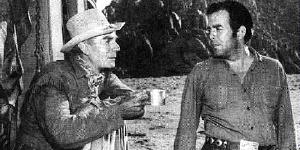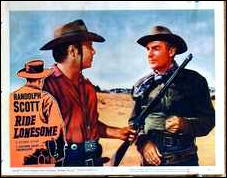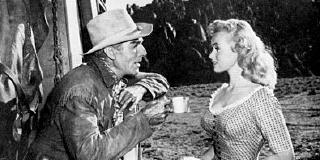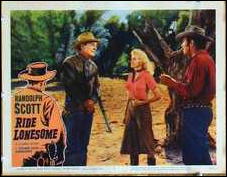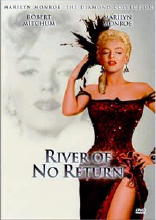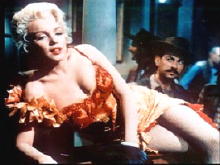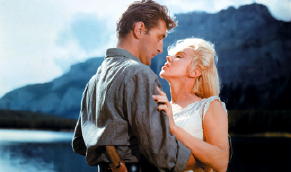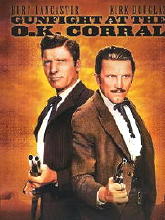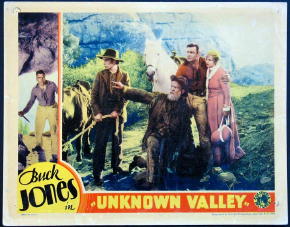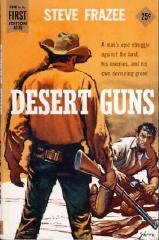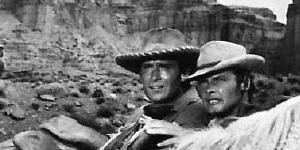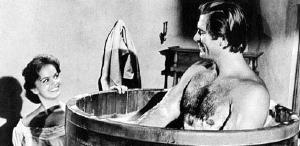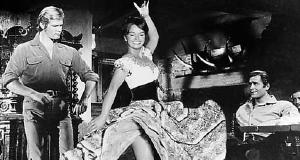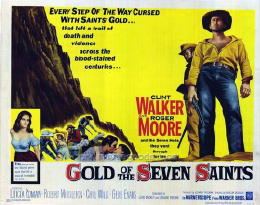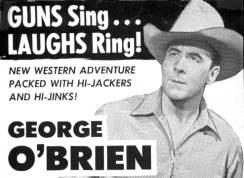Mon 12 Jan 2009
Archived Western Movie Review: MACKENNA’S GOLD (1969).
Posted by Steve under Reviews , Western movies[6] Comments
 MACKENNA’S GOLD. Columbia Pictures, 1969. Gregory Peck, Omar Sharif, Telly Savalas, Julie Newmar, Camilla Sparv, Keenan Wynn, Ted Cassidy, Eduardo Ciannelli, Lee J. Cobb, Raymond Massey, Burgess Meredith, Anthony Quayle, Edward G. Robinson, Eli Wallach.
MACKENNA’S GOLD. Columbia Pictures, 1969. Gregory Peck, Omar Sharif, Telly Savalas, Julie Newmar, Camilla Sparv, Keenan Wynn, Ted Cassidy, Eduardo Ciannelli, Lee J. Cobb, Raymond Massey, Burgess Meredith, Anthony Quayle, Edward G. Robinson, Eli Wallach.
Narrated by Victor Jory. Based on the novel by Will Henry. Director: J. Lee Thompson.
Now this is what you can call an epic!
Over two hours of gold fever: outlaws teamed up with honest townspeople, evading the cavalry, being chased by Indians, crossing rapid rivers, through treacherous mountains, across deserts, into secret valleys seen by only one white man before, and his eyes were taken from him before he could return to tell the tale.

There is only one honest man in this picture, and that is the sheriff (Gregory Peck) who mistakenly kills the Indian chieftain who has the map, and he’s in constant trouble from that time on.
Peck is also the only leading player in this picture who does not seem seriously miscast for his or her part. I mean, come on, Telly Savalas as a cavalry officer? Julie Newmar as the most statuesque Indian this continent has ever seen? Camilla Sparv as the kidnapped blonde and blue-eyed daughter of a murdered judge? (*)

Other critical sources appear to be united in saying that this movie is overblown, over-produced, and not very good, either. It’s still a highly entertaining film, in spite of what they say.
It’s tough to keep a good western story down, and if you don’t like the story, you can always watch the scenery. It’s terrific.
____
(*) Looking through the credits again, I’m willing to reconsider that statement, just a little. Keenan Wynn is perfect as the drunken lout of a sidekick for the notorious Mexican bandit, Colorado. (Played by Omar Sharif, of course.)
[UPDATE] 01-12-09. I found a few other scenes taken from the movie that I could have added to show you, but the review was too short to accommodate them all. (Sorry.) The only other comment I could add is that my younger self has convinced me, if nobody else, that this is a film that’s a Must See Again.







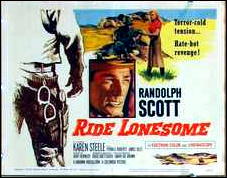 RIDE LONESOME. Columbia Pictures, 1959. Randolph Scott, Karen Steele, Pernell Roberts, James Best, Lee Van Cleef, James Coburn. Screenwriter: Burt Kennedy; director: Budd Boetticher.
RIDE LONESOME. Columbia Pictures, 1959. Randolph Scott, Karen Steele, Pernell Roberts, James Best, Lee Van Cleef, James Coburn. Screenwriter: Burt Kennedy; director: Budd Boetticher.